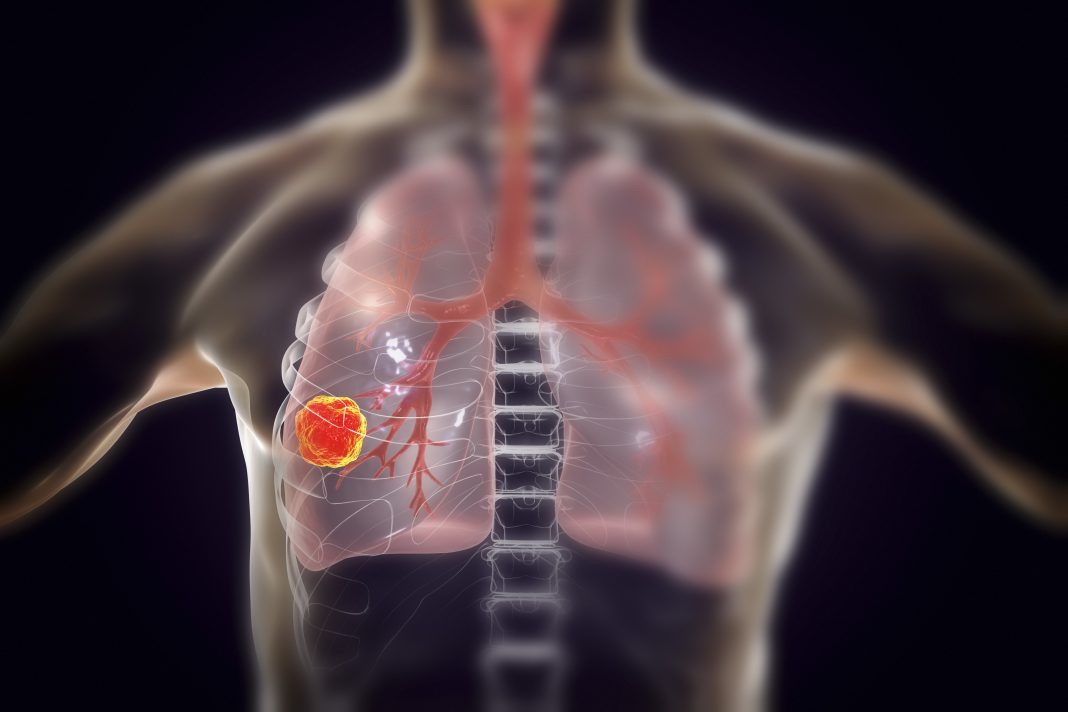Exhaled breath can contain chemical clues that may indicate diseases including cancers. Developing methods for sensing these compounds could help doctors provide early diagnoses, and potentially improve patient prospects. Researchers headed by a team at Zhejiang University have now reported the development of ultrasensitive, nanoscale sensors, that in small-scale tests distinguished a key change in the amount of one compound, isoprene, in the exhaled breath of people with lung cancer. Pingwei Liu, PhD, Qingyue Wang, PhD, and colleagues say that when used to detect breath isoprene, the indium(III) oxide (In2O3)-based Pt@InNiOx nanoflakes achieved an exceptionally low limit of detection (LOD) of 2 ppb, which is the lowest reported for an isoprene sensor to date.
The researchers say their work represents a breakthrough in low-cost, noninvasive cancer screening through breath analysis, and also advances the rational design of cutting-edge gas sensing materials.
Corresponding authors Liu, Wang, and colleagues described their development in ACS Sensors in a paper titled “Ultrasensitive In2O3‑Based Nanoflakes for Lung Cancer Diagnosis and the Sensing Mechanism Investigated by Operando Spectroscopy.” In their report they concluded, “Our study provides a new approach for the rational design of ultrasensitive sensing nanomaterials, validating the potential of Pt@InNiOx nanoflakes for rapid and cost-effective lung cancer diagnosis and holding profound significance for dynamic health monitoring.”
Gas sensors are becoming increasingly important in fields including healthcare, the authors wrote. “An emerging application of gas sensing technology is the analysis of human breath, which contains a myriad of endogenous volatile organic compounds (VOCs) that can serve as biomarkers of diseases and cancers.”
People breathe out many gases, such as water vapor and carbon dioxide, as well as other airborne compounds. Researchers have determined that relatively reduced levels of in one exhaled chemical—isoprene—can indicate the presence of lung cancer. “… isoprene is a typical biomarker for abnormal cholesterol metabolism, and its concentration in exhaled breath can be used to diagnose lung cancer,” the team further explained.
However, breath analysis poses significant challenges, as sensors need to be highly sensitive, capable of detecting isoprene levels in the parts-per-billion (ppb) range. Sensor technology would also need to differentiate isoprene from other volatile chemicals and withstand breath’s natural humidity.
Previous attempts to engineer gas sensors with the required characteristics have focused on metal oxide semiconductors (MOSs), including one particularly promising compound made with indium oxide. For their newly reported research the team headed by Liu, and by Wang set out to refine indium oxide-based sensors to detect isoprene at the level at which it naturally occurs in breath. They developed a series of indium(III) oxide (In2O3)-based nanoflake sensors, and in their reported experiments, found that one type, Pt@InNiOx was the best performing. These Pt@InNiOx sensors could detect isoprene levels as low as 2 ppb—which is a level of sensitivity that far surpassed earlier sensors—and responded to isoprene more than other volatile compounds commonly found in breath. In tests the sensors performed consistently during nine simulated uses.
Importantly, the authors’ real-time analysis of the nanoflakes’ structure and electrochemical properties revealed that Pt nanoclusters uniformly anchored on the nanoflakes catalyzed the activation of isoprene sensing, leading to the ultrasensitive performance. In their paper they noted that their study revealed that “the ultrasensitive performance of Pt@InNiOx nanoflakes stems from the activated conjugated structure of isoprene by Pt nanoclusters and from the enhanced isoprene adsorption and electron interaction due to the nanoflake morphology.”
To showcase the potential medical use of these sensors, the researchers incorporated the Pt@InNiOx nanoflakes into a portable sensing device that provided a direct read out of isoprene concentration. Into this device they introduced breath collected earlier from 13 people, five of whom had lung cancer.
In these tests the device detected isoprene levels lower than 40 ppb in samples from participants with cancer and more than 60 ppb from cancer-free participants. “Practically, we integrate these ultrasensitive Pt@InNiOx nanoflakes into a miniaturized portable electronic device that successfully distinguishes lung cancer patients with expiratory isoprene below 40 ppb, from the healthy population with isoprene above 60 ppb, enabling an accurate diagnosis in clinics,” they stated.
The researchers suggest that this sensing technology could provide a breakthrough in non-invasive lung cancer screening and has the potential to improve outcomes and even save lives. “These findings underscore the effectiveness of the Pt@InNiOx sensor in real-world scenarios, validating its potential for rapid and cost-effective lung cancer diagnosis,” they wrote. “Consequently, integrating this ultrasensitive sensing material into a portable device holds significant implications for at-home surveillance for lung cancer patients, enabling dynamic monitoring of their health status.”
They in addition acknowledged that to commercialize the technology for use in lung cancer diagnosis more research will be needed in areas including the sensing materials themselves, data analysis, and integrating the technology with portable devices, as well as further investigation of the relationship between breath isoprene and lung cancer. “By addressing these areas and finishing the rigorous clinical trials, breath isoprene gas sensing technology could become a transformative tool in the noninvasive detection of lung cancer, ultimately saving lives and improving healthcare,” they concluded.


